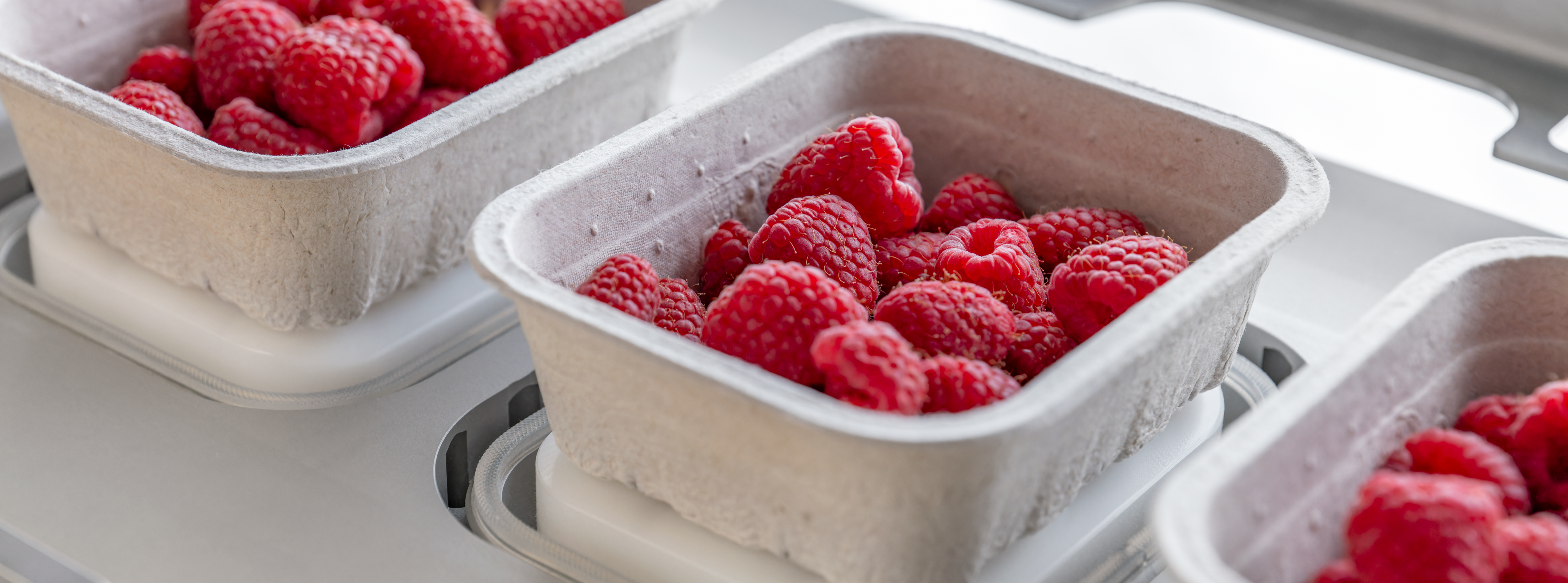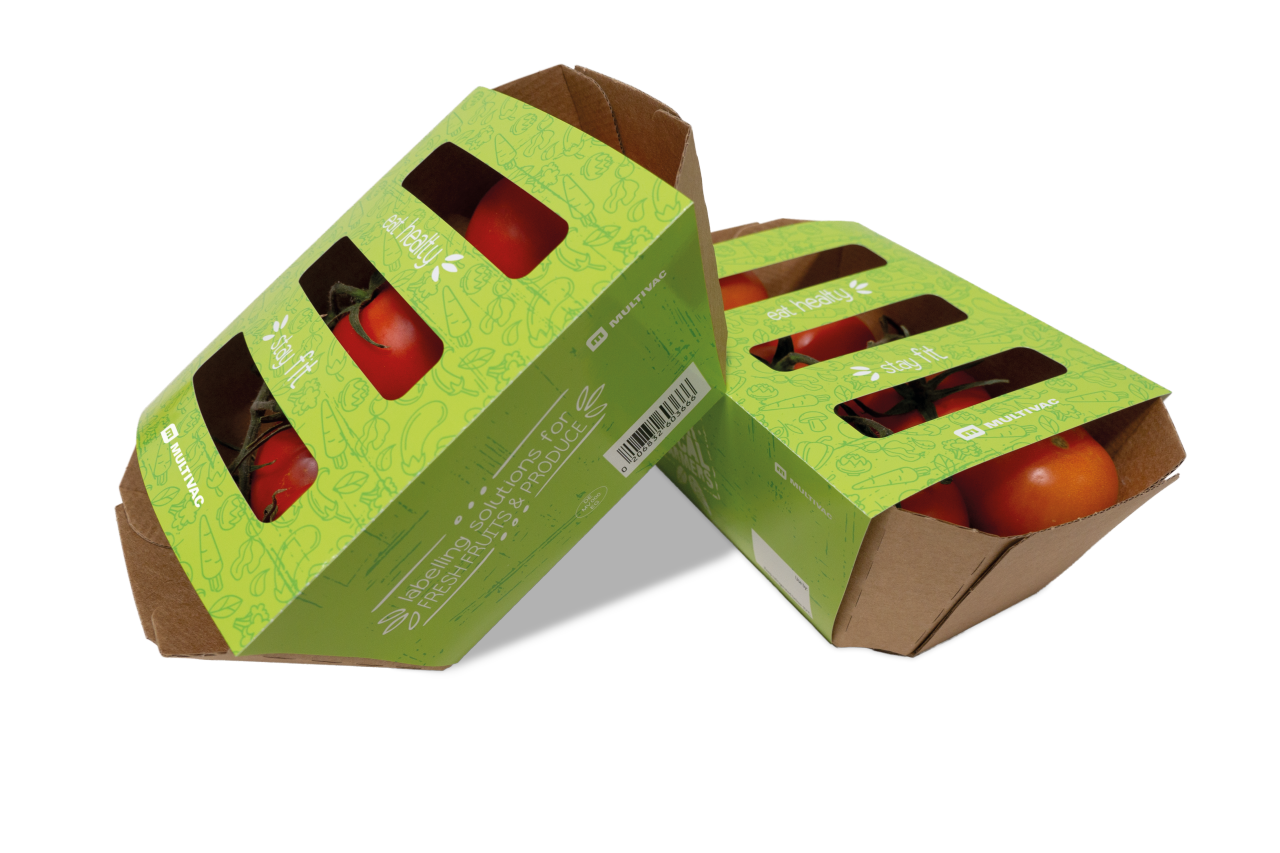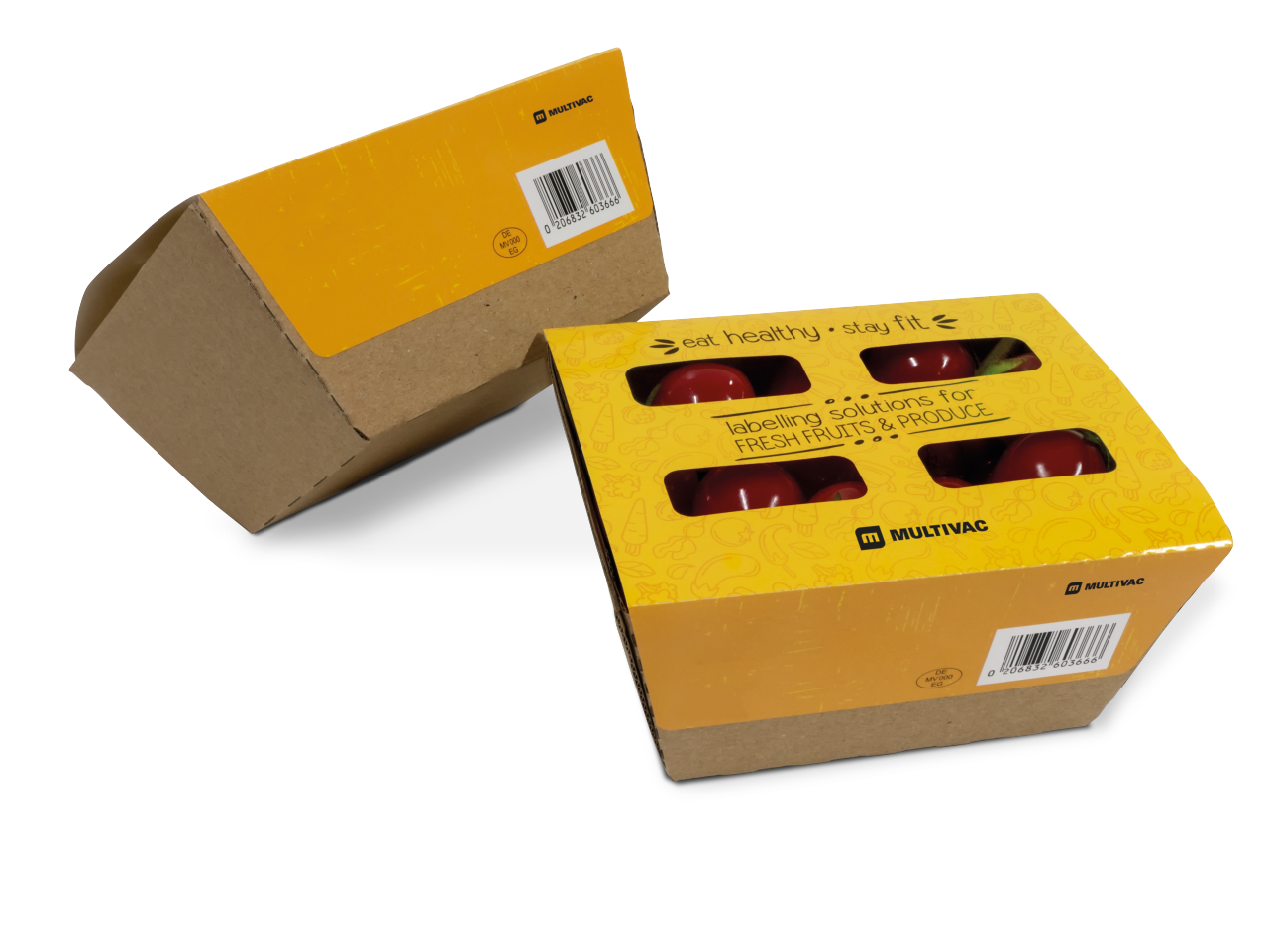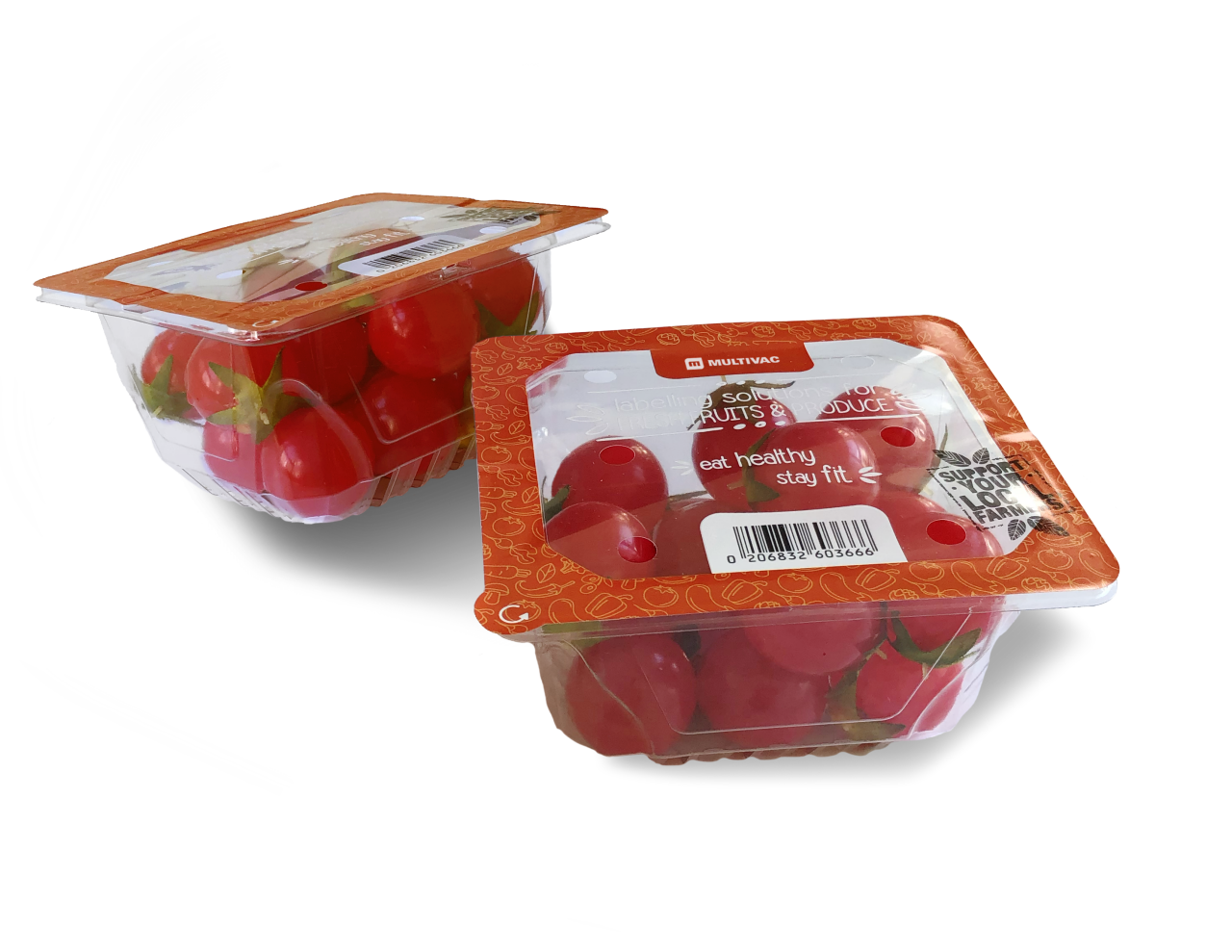


Particularly when it comes to natural food products such as fruit and vegetables, it is innovative, recyclable and resource-saving packaging and labelling solutions, which are stealing the show over conventional concepts. MULTIVAC adjusted to this trend at an early stage: Its solutions not only meet the sustainability requirements of customers, they also protect the packaged product perfectly, as well as reducing food wastage and appealing to retailers and consumers alike with their attractive design.
But completely environmentally-friendly packaging with a lot of space for information? And also with the plus of product protection and pack security? And the whole package offering maximum efficiency and cost-effectiveness in the production process? Is that really possible? “Yes, it's possible! But only however with fresh ideas and practical concepts,” believes Christian Zimmermann, Project Manager for Market Intelligence & Applications at MULTIVAC. His motto: "Thinking outside the box".
A rethink is urgently required in terms of food wastage: According to estimates by the FAO (United Nations Food and Agriculture Organization), around 1.3 billion tons of food are lost every year for different reasons, and this equates to about a third of the entire food production.
The emissions from food products, which are not consumed, add up to around six percent of all emissions. With an unenviable share of this figure of 42 percent (550 million tons), the fruit and vegetable sector is the lonely frontrunner in food wastage, followed by cereals, root crops, tubers, dairy products, meat, fish and crustaceans. Another fact: Around a fifth of all fruit and vegetables is lost even before harvesting, and therefore not processed or reaching the retail chain.
So how can we put a stop to food losses and the consequent waste of costly resources? And above all: What role does packaging play here?
... is rightly in the spotlight of public discussion about climate change and environmental protection. More than 190 countries worldwide have agreed on a strategy to halve food losses per head by 2030 at retail and consumer level in the "UN Agenda 2030 for Sustainable Development". In parallel with this, efforts will be made to significantly reduce losses throughout the process chain.
According to current studies, the ecological footprint of a packaged food product, when taking into account the cultivation, production, processing and logistics, is around 30 times higher than the footprint of the pack itself. Only about three to four percent of the environmentally harmful effects can on average be assigned to the packs themselves. The influence of packaging, and in particular plastic packs, on the world's climate is therefore relatively small, but it is considerably overestimated by most consumers. However: Every gram of packaging material that can be saved does help. And every item of food produced, which does not perish prematurely or is not wasted unnecessarily thanks to the perfect packaging concept, improves the eco balance sustainably.
... the product throughout the entire logistics chain. It extends the product's shelf life. It prevents the loss of aroma and nutrition. It preserves the shape, colour, feel and substance - and therefore also the appetising appearance of the product. An intelligent packaging design also makes a significant contribution to a smaller pack volume. If a greater number of lighter packs can be stacked, stored and transported, this reduces the energy requirement for transport and chilling, and it also makes additional journeys unnecessary.
“Packs, which are perfectly matched to the product, are almost always associated with ecological benefits. Because the benefit in terms of avoidable food wastage is nearly always greater than the effort involved in producing and disposing of the packs,” underlines Christian Zimmermann. For example, fresh and crispy cucumbers can generally be enjoyed for about six days, when unpackaged and kept at the optimum storage temperature, whereas they can be consumed for up to 23 days if packaged. Despite the presence of plastic film, their eco balance is significantly better than that of the unpackaged product. It is a similar story with meat, ham and sausage products.
Where the best-before date is six days, the wastage rate in retail amounts to around six percent. If the best-before date can be doubled through the use of suitable packaging concepts, the food wastage is reduced by 40 percent overall. If one assumes that around 30 percent of greenhouse gas emissions are associated with food, the eco footprint can be reduced overall by up to eight percent through the prevention of food wastage - an enormous value.
MULTIVAC has been actively engaged for years in this area, and it sets the benchmark when it comes to sustainable machine solutions and packaging concepts. For the marketing of fruit and vegetables in particular, the packaging and processing specialists at MULTIVAC are increasingly focusing on plastic-free and recyclable packs. One particularly sustainable solution is available for every product and packaging application - MULTIVAC PaperBoard, ranging from trays or cardboard backing material made from 100 percent paper-fibre, right up to solutions with a small proportion of around 10 percent plastic.
When it comes to labelling as well, the way is pointing directly towards sustainability. In addition to the classic full wrap labelling, which has already become firmly established in the market, and where a label is applied over all four sides of the pack, there are now two more sustainable solutions for the labelling and closure sealing of fresh produce trays: Top Wrap and Top Close labelling.

The label makes sure, that the content can not fall out of the tray or be removed by the customer. “Thanks to a combination of cardboard trays and self-adhesive labels made of paper or renewable materials, this produces a plastic-free pack, which can for example be used for mushrooms, berries, lemons or small avocados, and which can be easily and perfectly recycled,” adds Ronald Helmel, Business Development Manager at MULTIVAC Marking & Inspection.
In addition to this, it is also possible to use film labels made of polypropylene. They offer the benefit, that the product is visible thanks to a transparent viewing window on the top of the tray. “The proportion of plastic in such a pack is under 10 % depending on the label material used,” explains Ronald Helmel. “The label can also be easily removed, making it simple for the consumer to separate the materials into the different recycling channels.”

Plastic or cardboard trays with a wide flange or even round trays can be sealed closed simply and securely on the top and labelled at the same time. The label only adheres to the flanges of the tray. Thanks to an adhesive-free zone or retention of the backing material in the middle of the label, the product does not come into contact with the adhesive. The label can also be printed on the labeller itself with a best-before date for example, and it is even possible to inspect the print on the label. With an output of up to 200 products per minute, a labeller with Top Close has a particularly high output.
Both labelling solutions are very impressive thanks to their attractive label and recyclable pack. The self-adhesive labels on a backing material not only offer a large area for customer information and marketing purposes, they also open up a wide range of possibilities for product presentation in terms of material thickness and label shape. It is possible for example to have cut-outs in the label, as well as adhesive-free zones, so that contact with the product is prevented. Perforations serve as opening aids and make the handling of the packs easy for the consumer.


The high-performance L 310 Top Close and L 310 Top Wrap conveyor belt labellers provide the solution. In the case of both models, the trays are automatically labelled on the run, and they are either fed in manually or transferred automatically from an upstream module. This provides tangible cost savings in personnel and very efficient processes, when compared with time-consuming, manual packaging solutions.
The output is on average up to 200 packs per minute. Labels with a width of up to 300 mm and a material grade of up to 170 g/m² can be run. If required, an additional label can also be applied very precisely to the base of the pack in the same operation.
And if a MULTIVAC splice table is used, the required change of label rolls can be performed in significantly less than one minute. The result is that downtime is reduced considerably and productivity increased. This positive effect can be topped still further with the so-called "Zero Downtime" version of the L 310: Here a second label dispenser automatically takes over the labelling, when a change of label material is due. “A flying label change like this makes it possible to have uninterrupted operation, and this provides a further boost to productivity,” adds Ronald Helmel.
The two compact models from MULTIVAC can be integrated seamlessly into existing lines, or they can be used as a stand-alone solution with manual product infeed.
06.09.2023